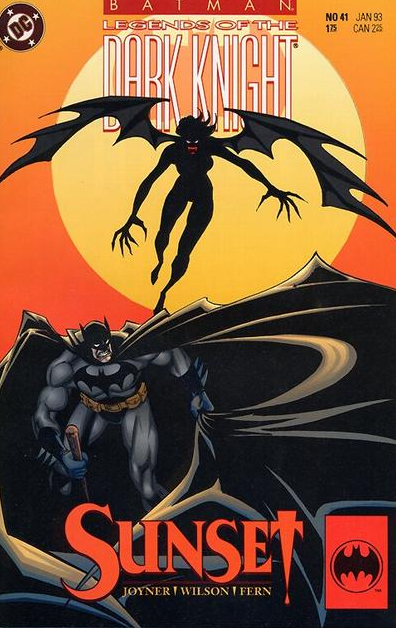Between Christopher Nolan’s movies and the Gotham TV show, a new generation of fans really seems to be digging dark, pseudo-realistic takes on Batman. But with 75 years’ worth of comics to choose from, people don’t necessarily know what to read. Maybe they want a place to start, or maybe they just want an isolated story that doesn’t take much time, doesn’t cost much money, and, crucially, doesn’t require familiarity with decades of background continuity. That’s why I’m here. (Well, technically, that’s why DC’s marketing department is wherever it is – me, I’m just doing it for the cause.)
A logical place to start has got to be Frank Miller’s and David Mazzucchelli’s Year One. As I explained earlier this week, not only is it one of the best Batman comics ever, it literally follows Bruce Wayne’s first year as the Dark Knight so the backstory is kept to a minimum. Yet where do you go from there? The logical answer would be Year Two, but actually – as I have also pointed out – that happens to be one of the worst Batman books around. Instead, you may want to explore other comics from the ‘Year One’ line. These are comics that take place during the Dark Knight’s earlier years (although not necessarily in his initial year) and feature a more humanized, relatively fallible Batman. They tend to put story first and serve as introduction to key concepts and characters. All the background you need is to know that Bruce’s parents were shot and, frankly, even if you’ve never picked up a comic you’ve probably seen it happen plenty of times.
One of the many comics that link directly to Miller’s and Mazzucchelli’s book is the excellent Shaman, which begins before Year One and then runs parallel with it, but works as a self-contained mystery. And while I doubt the world was crying out for a story tying Batman’s mask to Native American symbolism, veteran Bat-writer Dennis O’Neil delivers plenty of neat moments:
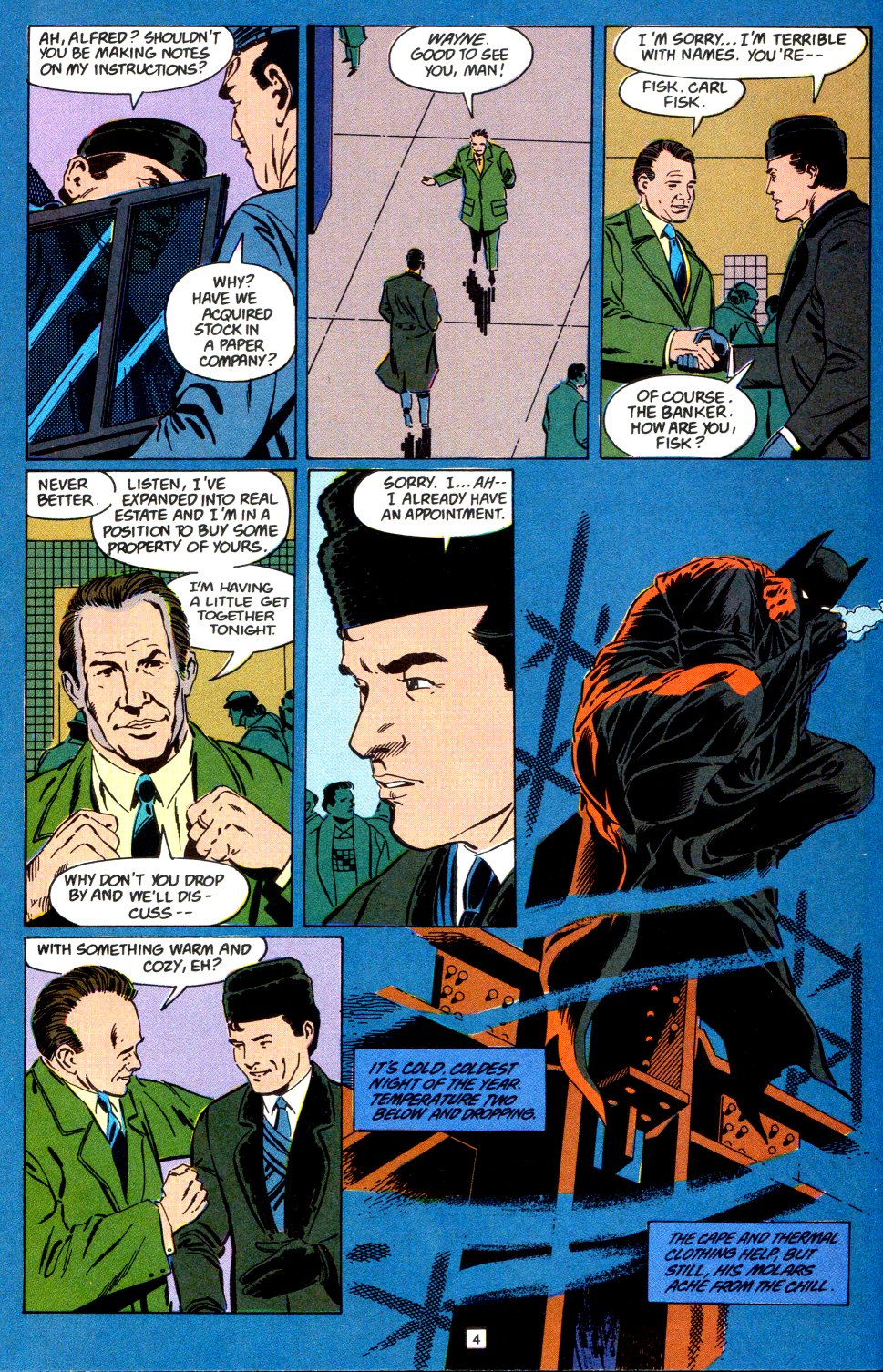 Legends of the Dark Knight #3
Legends of the Dark Knight #3
Also, Catwoman: Her Sister’s Keeper expands Catwoman’s elliptical origin from Year One, showing some of that book’s scenes from Selina Kyle’s perspective. In true ’80s fashion, writer Mindy Newell channels the jazzy dialogue and urban tone of a James Ellroy novel. In fact, even if you’re into grit, Her Sister’s Keeper is quite hardcore:
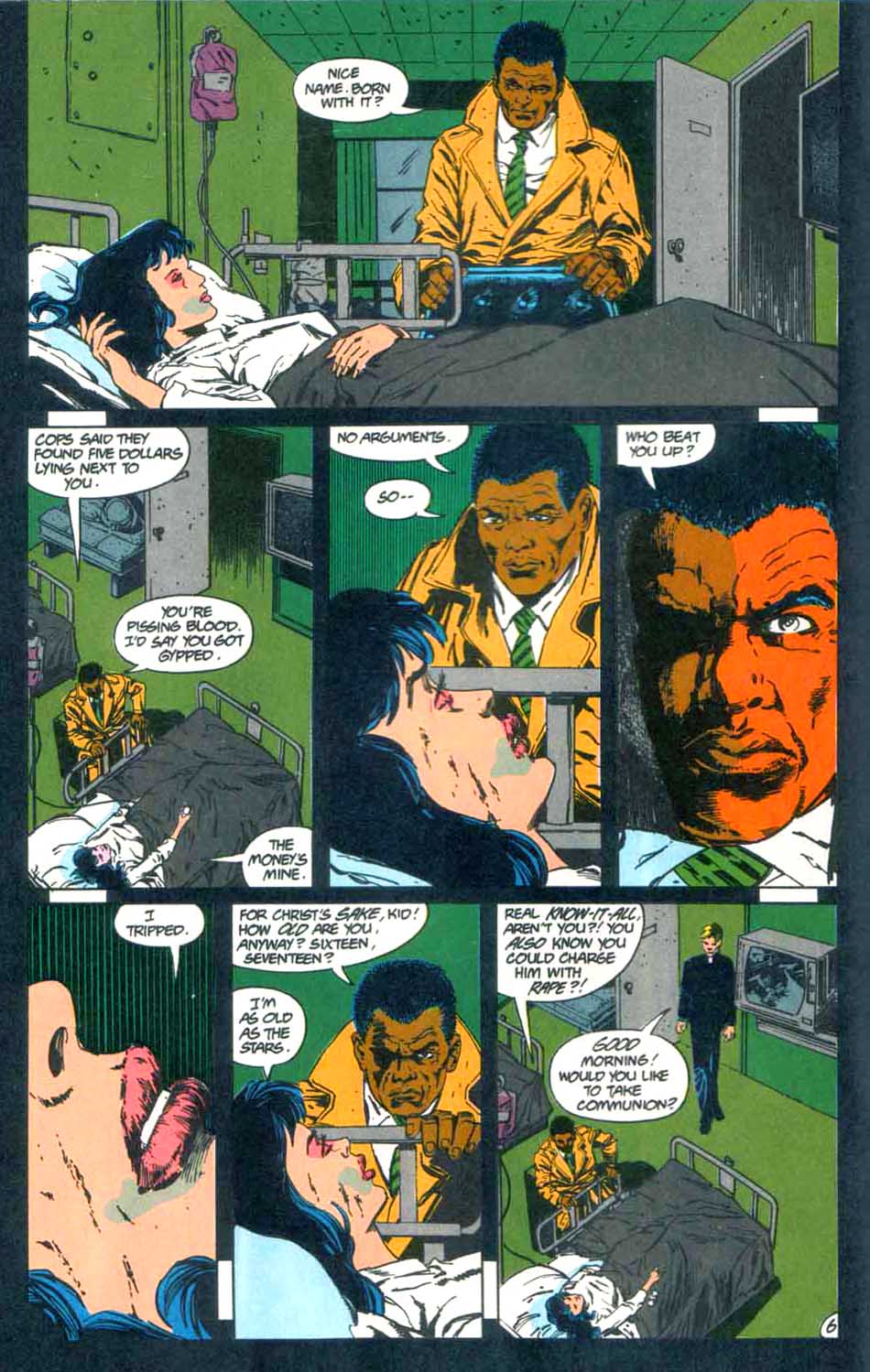
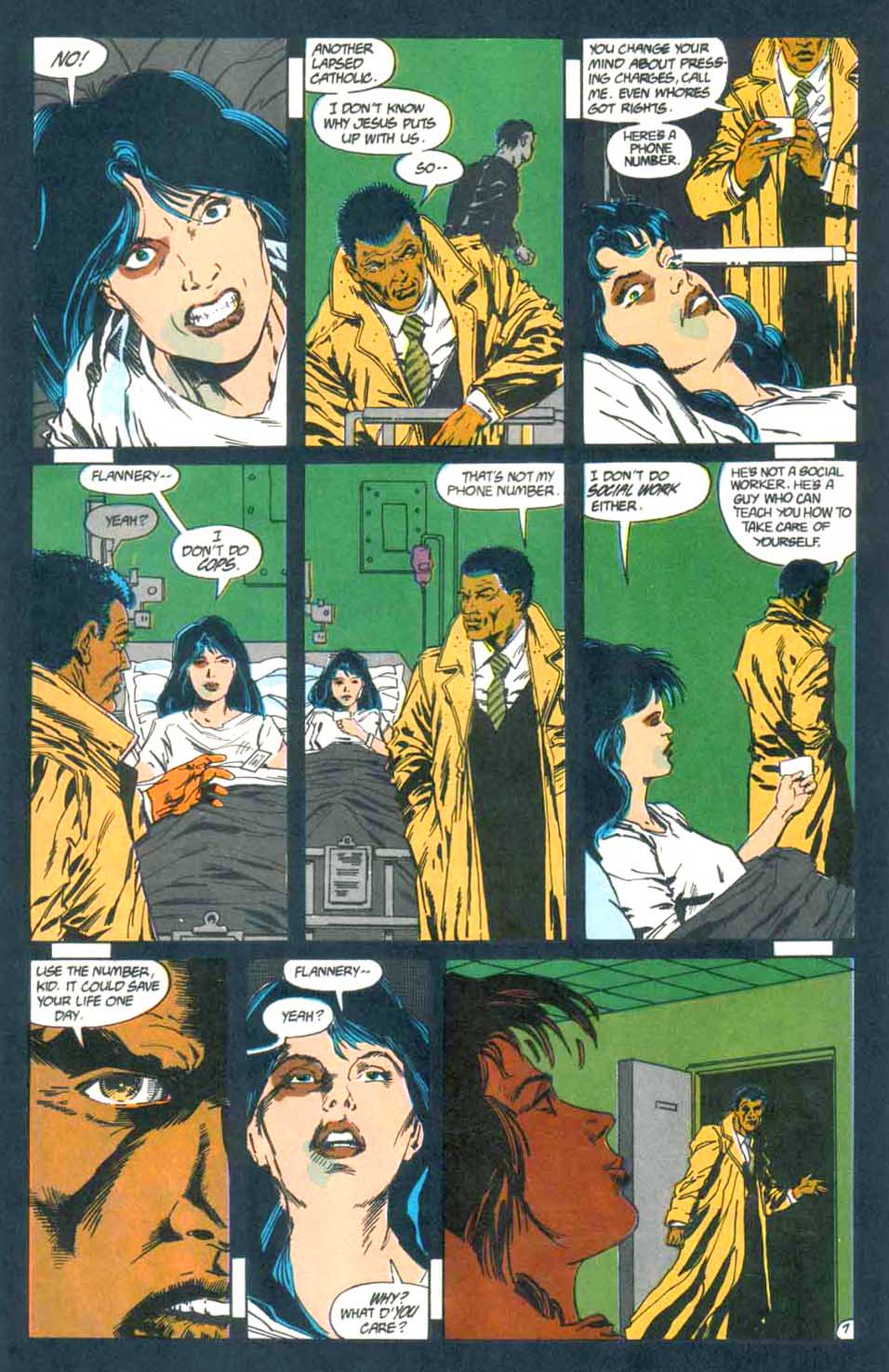 Catwoman #1
Catwoman #1
Probably the most accomplished work to follow in Year One’s steps is Jeph Loeb’s and Tim Sale’s The Long Halloween. This comic, which was a major inspiration for Nolan’s The Dark Knight, addresses the transformation of Gotham from a city of gangsters into a city of insane, costumed criminals, while also serving as an origin story for Two-Face. The Long Halloween picks up threads from Year One and has a similarly hardboiled atmosphere, although Sale’s gorgeously stylized artwork gives it a very different flow from Mazzucchelli’s pencils – for one thing, Bruce Wayne looks less like a young Gregory Peck and more like someone who could knock out Arnold Schwarzenegger. More importantly, the book is full of taut characterization (particularly of Batman, Gordon, and district attorney Harvey Dent), shameless homages to The Godfather films, perhaps one too many gratuitous cameos by the rogues’ gallery, and a genuinely clever whodunit. And instead of beaten up prostitute Selina, we get a mob-connected party girl:
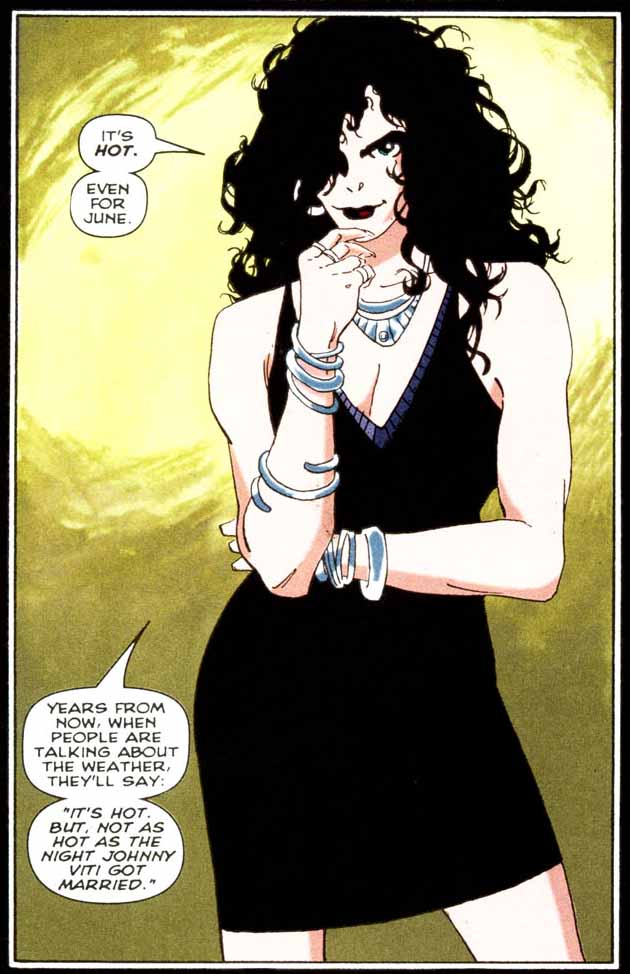 The Long Halloween #1
The Long Halloween #1
Loeb and Sale have worked together on other ‘Year One’ projects. Haunted Knight collects their earlier comics, about Bruce Wayne’s first Halloweens as the Dark Knight – although not as intricately plotted, they contain poignant insights into Bruce’s personality. The duo also did a sequel to The Long Halloween called Dark Victory, which shows how Batman took in Robin while involved in another mystery plot of gangsters and themed villains. Dark Victory shares most of the virtues and flaws of its predecessor, without the freshness.
 Dark Victory #1
Dark Victory #1
If Dark Victory is still recommendable, then the same can’t be said for Catwoman: When in Rome, except for Tim Sale’s dazzling art. While supposedly a missing piece in The Long Halloween/Dark Victory trilogy – taking place during the latter – When in Rome is plagued with dumb character developments and huge plot holes, as is typical of Jeph Loeb’s 21st century output. If it’s Sale’s art that’s pulling you in, then you’ll be better suited with the Tales of the Batman collection, which includes a bunch of groovy comics drawn by him.
Other works have been designed to tie in with Year One, even copying the font of Bruce’s and Gordon’s internal monologues (originally lettered by God-of-letterers Todd Klein). One of these books is Ed Brubaker’s and Doug Mahnke’s The Man Who Laughs, about Batman’s first encounter with the Joker. Brubaker successfully emulates Frank Miller’s voice, although, oddly enough, a major plot point does contradict (or at least disregard) Year One’s final scene. Still, it’s a tightly paced comic… this Brubaker guy, it’s a shame he didn’t write more crime stuff!
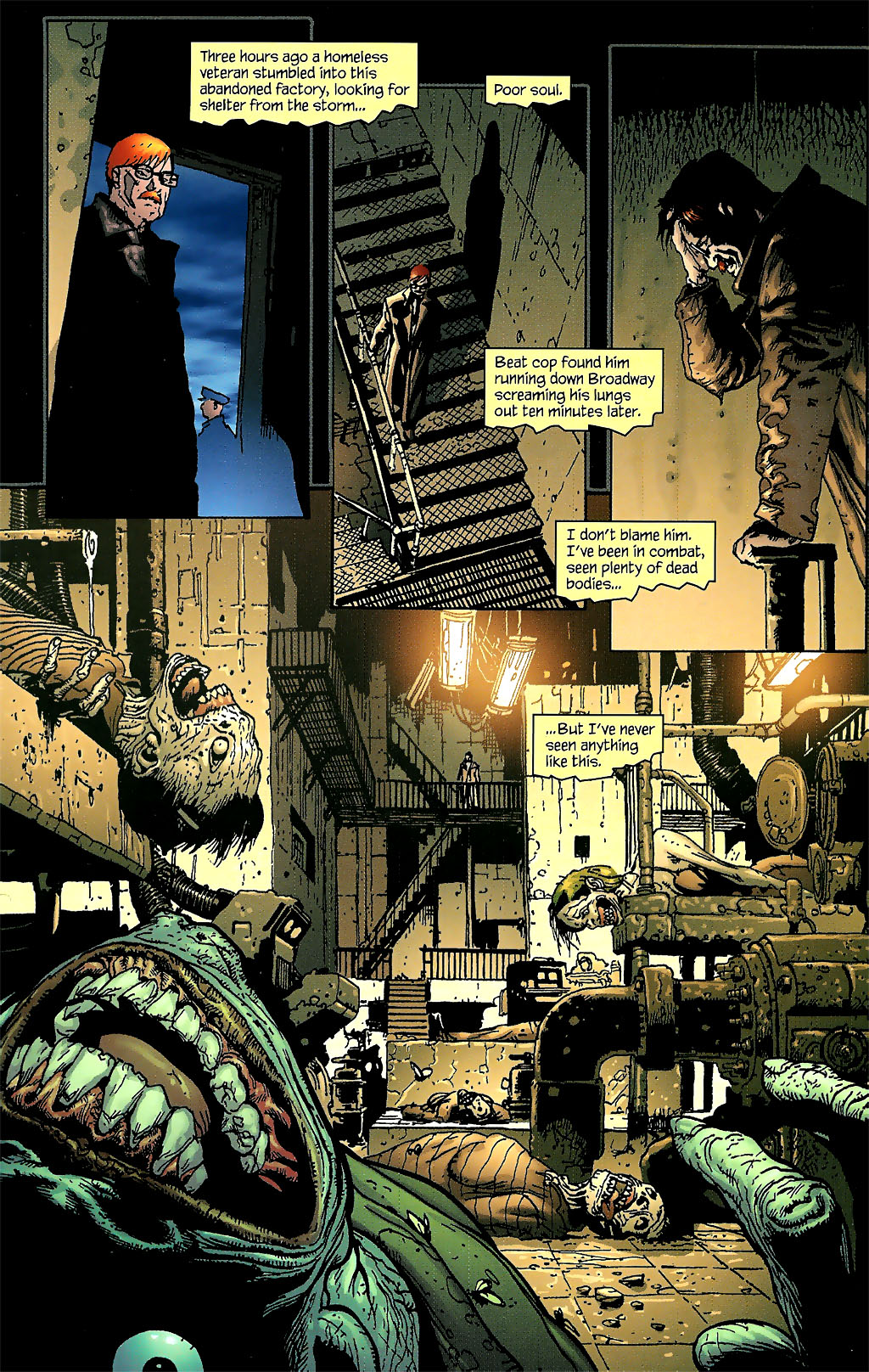 The Man Who Laughs
The Man Who Laughs
Using a mix of film noir and gothic horror that is not for all tastes, Matt Wagner reworked a couple of Golden Age stories in Batman and the Monster Men (including the introduction of the deranged Professor Hugo Strange) and Batman and the Mad Monk (featuring a kinky cult straight out of a 1940s’ RKO production). Wagner filled these with nods to the abovementioned comics by Miller, Loeb, and Brubaker.
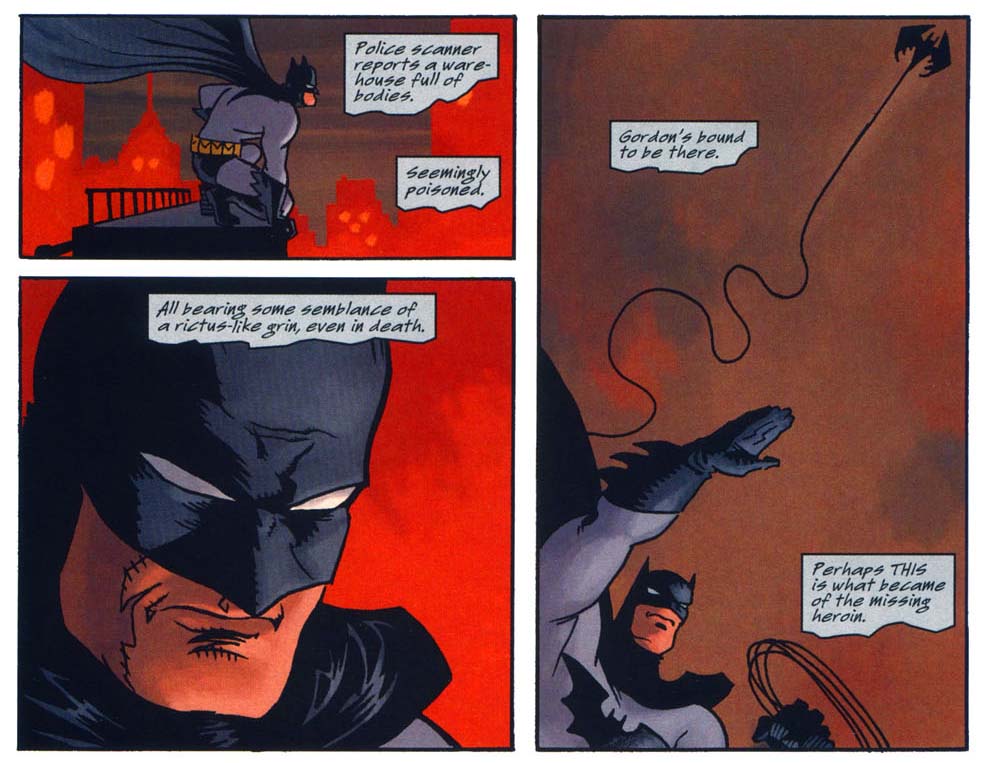 Batman and the Mad Monk #6
Batman and the Mad Monk #6
A more obscure yet worthwhile read is the graphic novel Night Cries. Written by the great Archie Goodwin and illustrated in painted impressionistic style by Scott Hampton, it features a particularly powerful characterization of James Gordon, who in the story has just become police commissioner. And it’s as cheerful as you’d expect a tale of serial killers and child abuse to be.
Furthermore, many cool stories in the first series of Legends of the Dark Knight were set during Batman’s early years. ‘Prey’ is a twisted, alternative version of the Caped Crusader’s first clash with Hugo Strange, close in mood to Year One. Writer Doug Moench followed it up with the racism-themed ‘Heat’ (which is much more interesting than the direct sequel, ‘Terror’). ‘Images’ is another good take on Batman’s initial face-off with the Joker. ‘Clay’ tells the origin of Clayface (Matt Hagen). ‘Loyalties’ explains the background of Barbara Gordon’s adoption by James Gordon.
Besides these, a number of DC annuals tell ‘Year One’ tales about supporting characters, and tend to do it quite well. The best is by far Batman Annual #14 (‘The Eye of the Beholder’), an amazing, psychological reimagining of Two-Face’s origin (which is pretty much incompatible with The Long Halloween). The annuals with Batman’s first encounters with Poison Ivy, the Riddler, Scarecrow, and Man-Bat have been collected in the book Four of a Kind. Robin (Dick Grayson) gets a well-crafted origin story in Robin Annual #4:
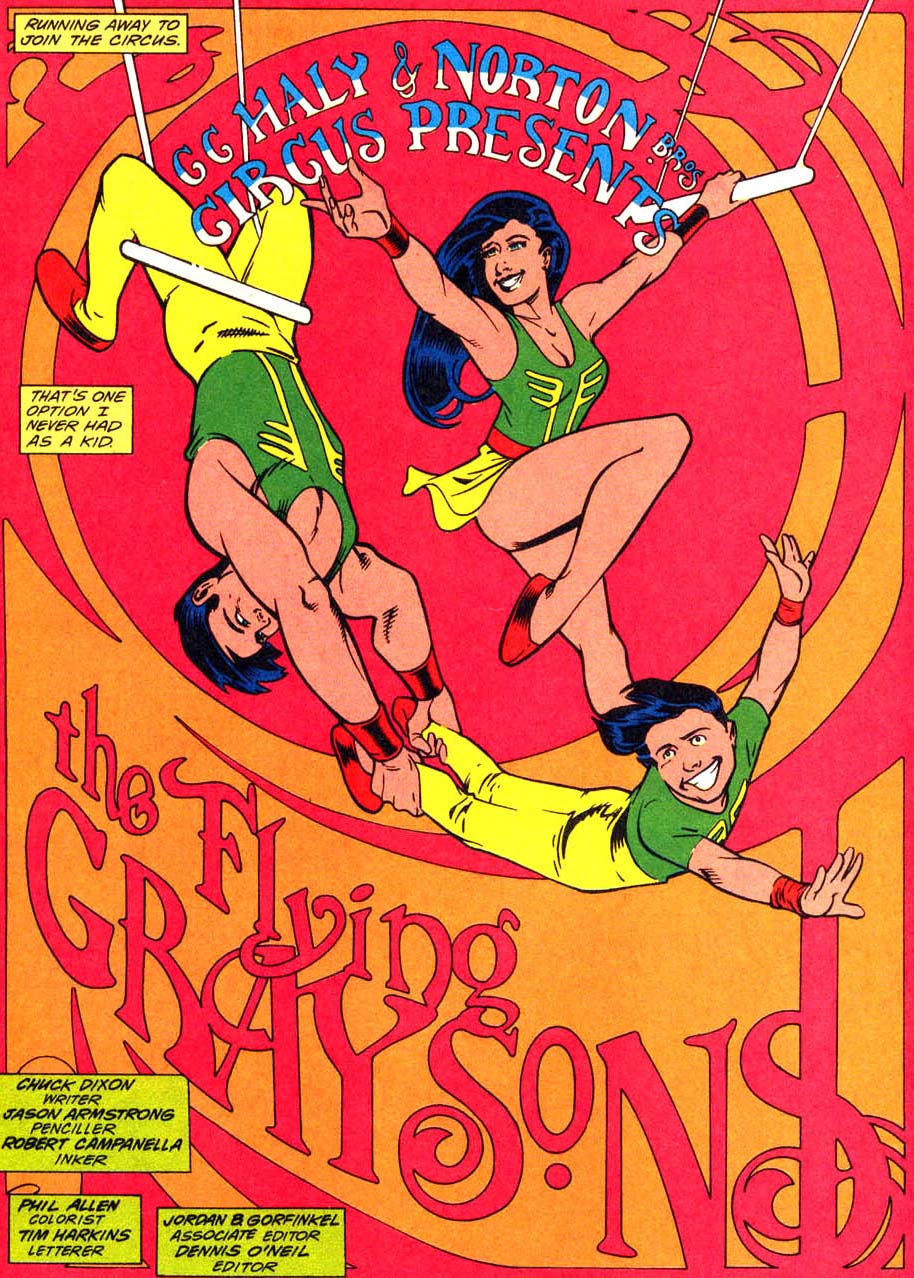 Robin Annual #4
Robin Annual #4
There is also an underrated graphic novel about Dick’s training, called The Gauntlet:
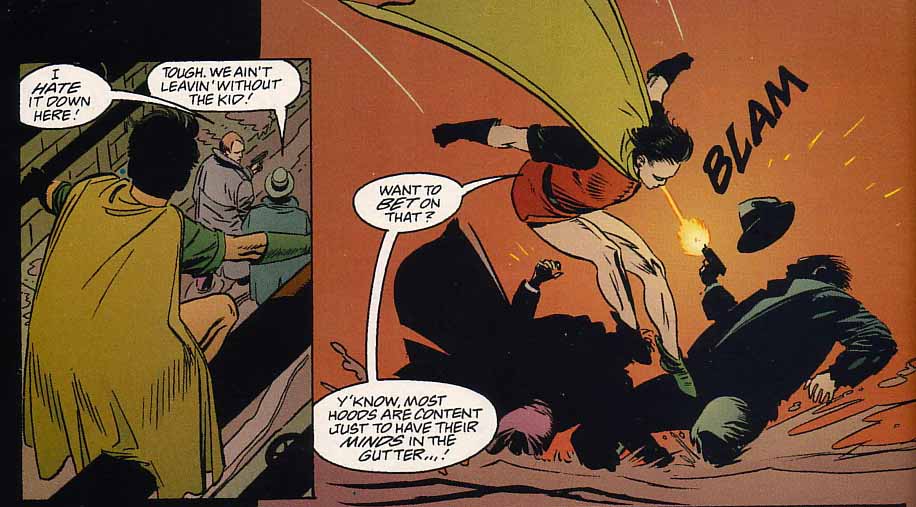 The Gauntlet
The Gauntlet
Building on these works, Chuck Dixon and Scott Beatty have written a string of first-rate mini-series about the first years of Batman’s main sidekicks, namely Robin: Year One (about post-Gauntlet Dick Grayson), Batgirl: Year One (about Barbara Gordon’s crime-fighting debut), and Nightwing: Year One (which sees Dick maturing from Robin into Nightwing, as well as his replacement as Robin by Jason Todd). These are fun comics, bursting with excitement and nice character moments. Because Dixon spent so much time writing the older versions of these characters, he manages to sneak in a lot of foreshadowing, which makes the comics rewarding for old fans while keeping them accessible to new ones. For example, check out these hints of the Joker’s future, violent involvement with Robin and Batgirl:
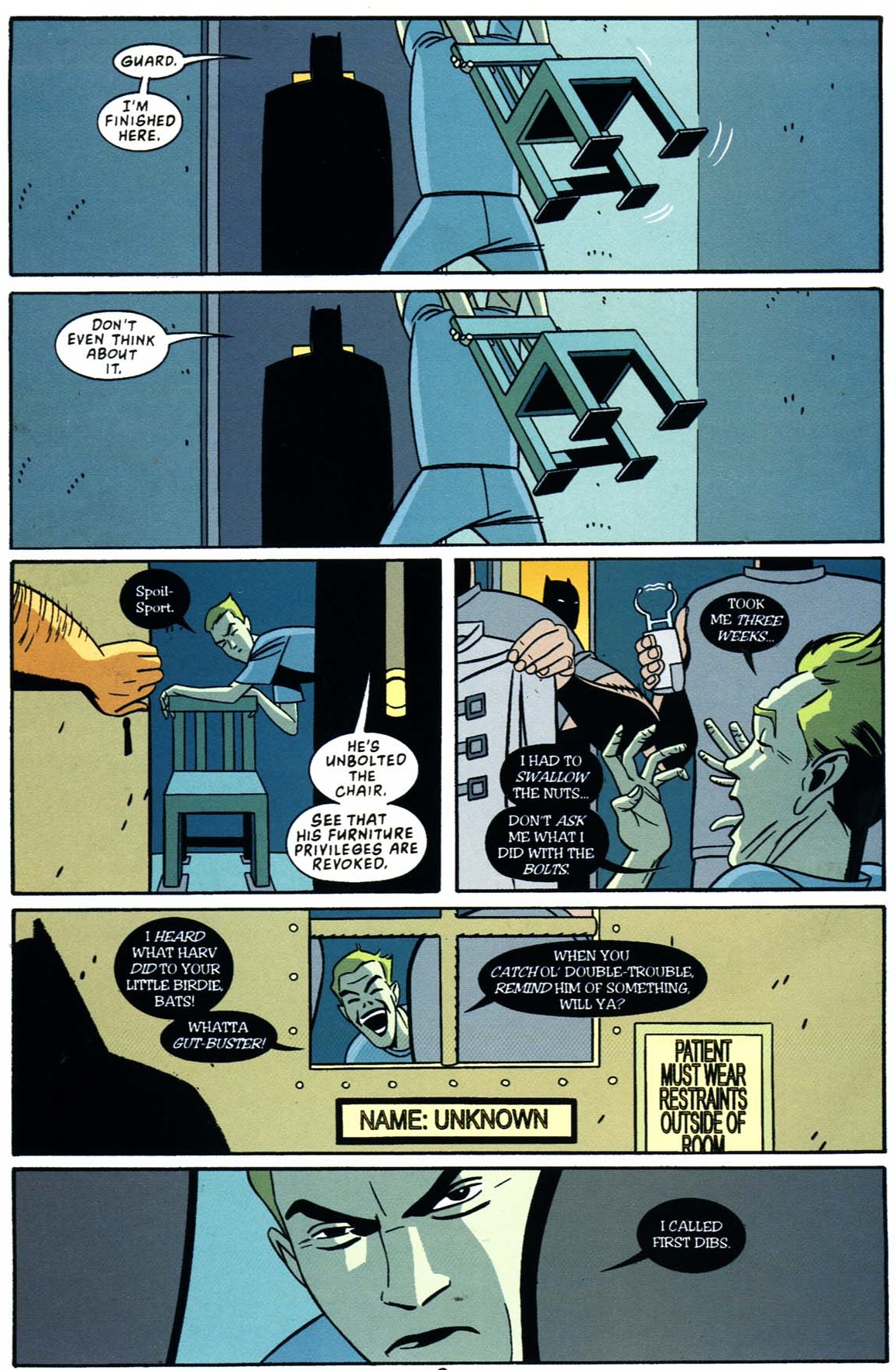 Robin: Year One #4
Robin: Year One #4
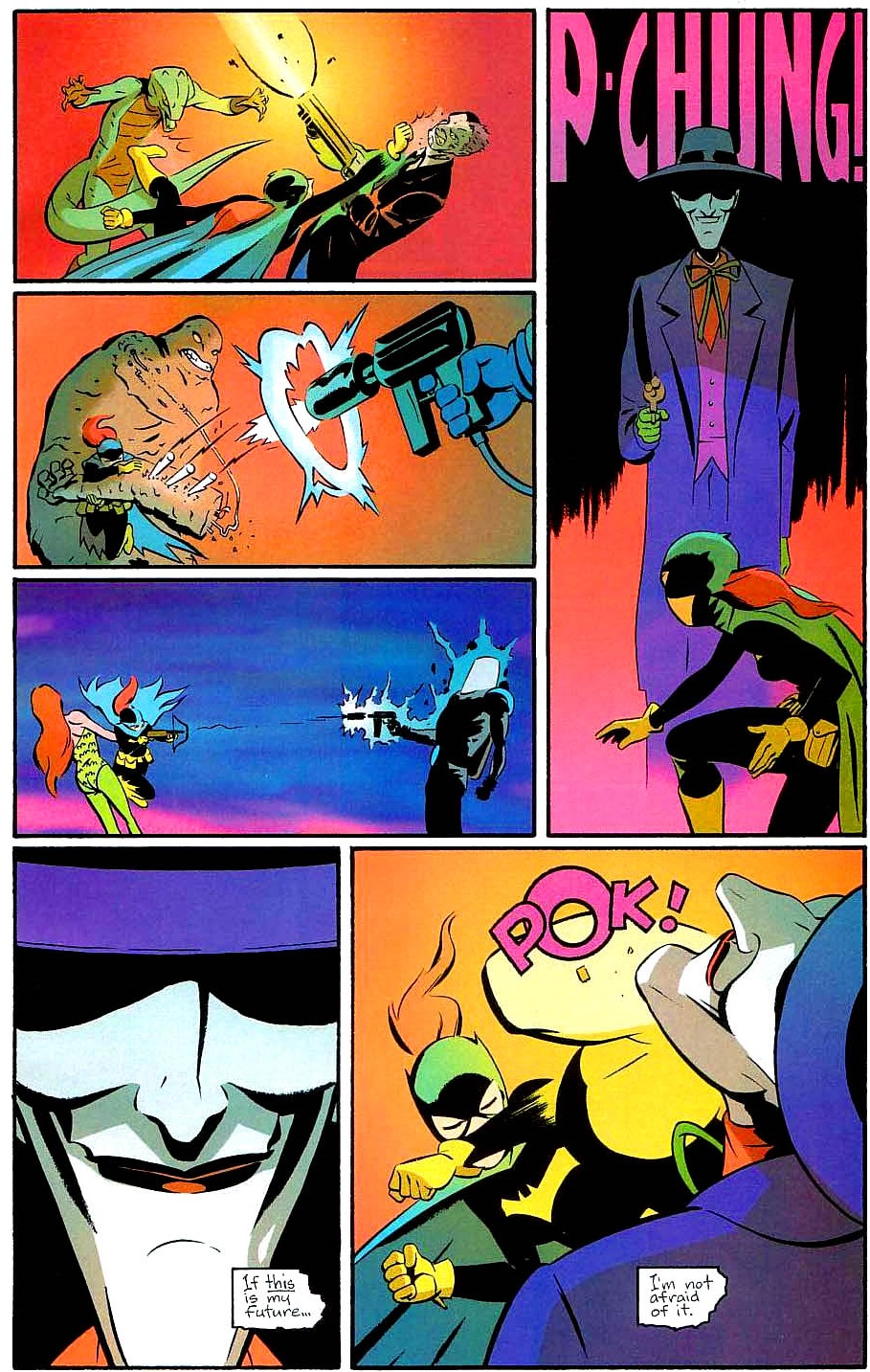 Batgirl: Year One #9
Batgirl: Year One #9
I should clarify that, like Year One, these are all stories set in the so-called post-Crisis continuity, which ran from 1987 to 2011. If you are interested in comics set before that, then the perfect place to start would be The Untold Legend of the Batman, which fills you in on the Dark Knight’s convoluted background up until the 1980s while telling a gripping story in its own right, written in Len Wein’s overwrought style:
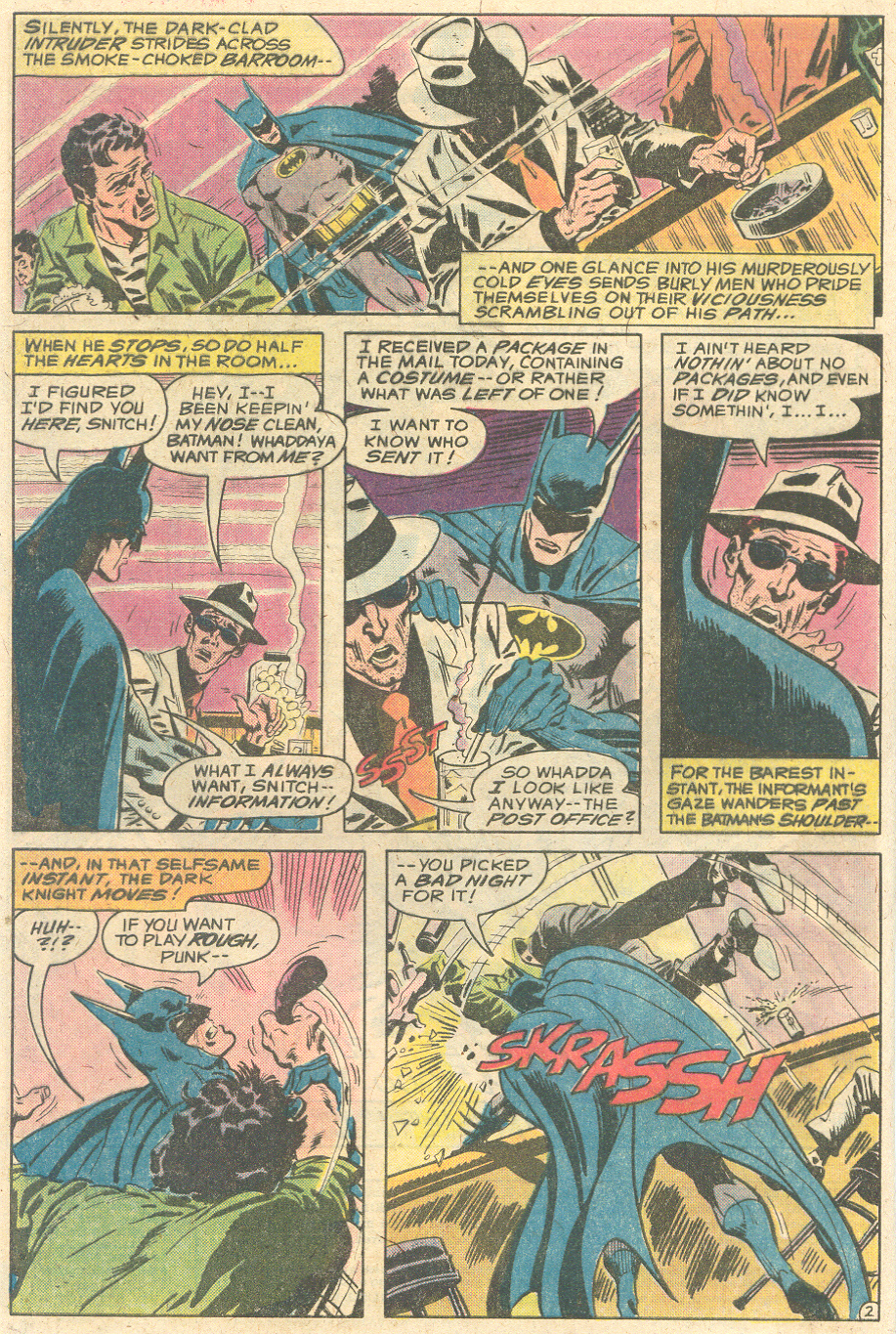 The Untold Legend of the Batman #2
The Untold Legend of the Batman #2
As for the continuity currently running in Batman comics, I guess the obvious equivalent would be Zero Year:
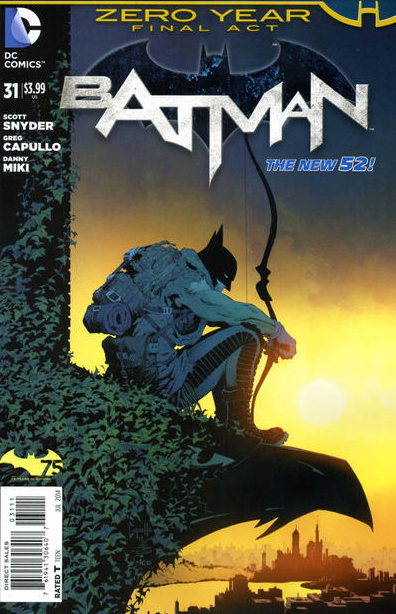 But what if you are just looking for a quick fix and don’t care about long-reaching narratives? DC has put out a few series specialized in self-contained Batman stories, including Batman: Black & White and the already mentioned Legends of the Dark Knight. The average level of quality is quite high, but some deserve extra praise. Among the most fascinating Legends are the existentialist character study ‘Mask’ (#39-40)…
But what if you are just looking for a quick fix and don’t care about long-reaching narratives? DC has put out a few series specialized in self-contained Batman stories, including Batman: Black & White and the already mentioned Legends of the Dark Knight. The average level of quality is quite high, but some deserve extra praise. Among the most fascinating Legends are the existentialist character study ‘Mask’ (#39-40)…
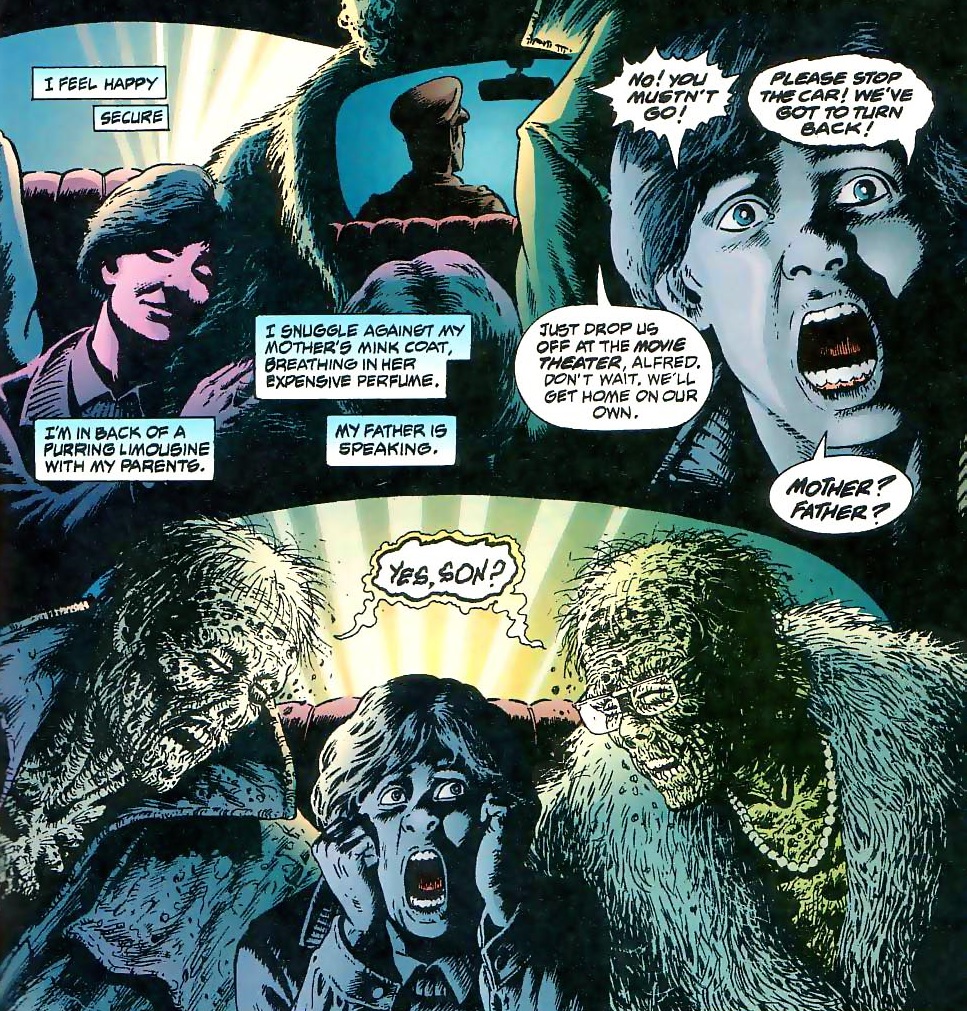 Legends of the Dark Knight #39
Legends of the Dark Knight #39
…and the paranoia-inducing ‘Conspiracy’ (#86-88), which merges pretty much every conspiracy theory floating around in the mid-90s, from all-powerful secret societies to Satanist biker gangs:
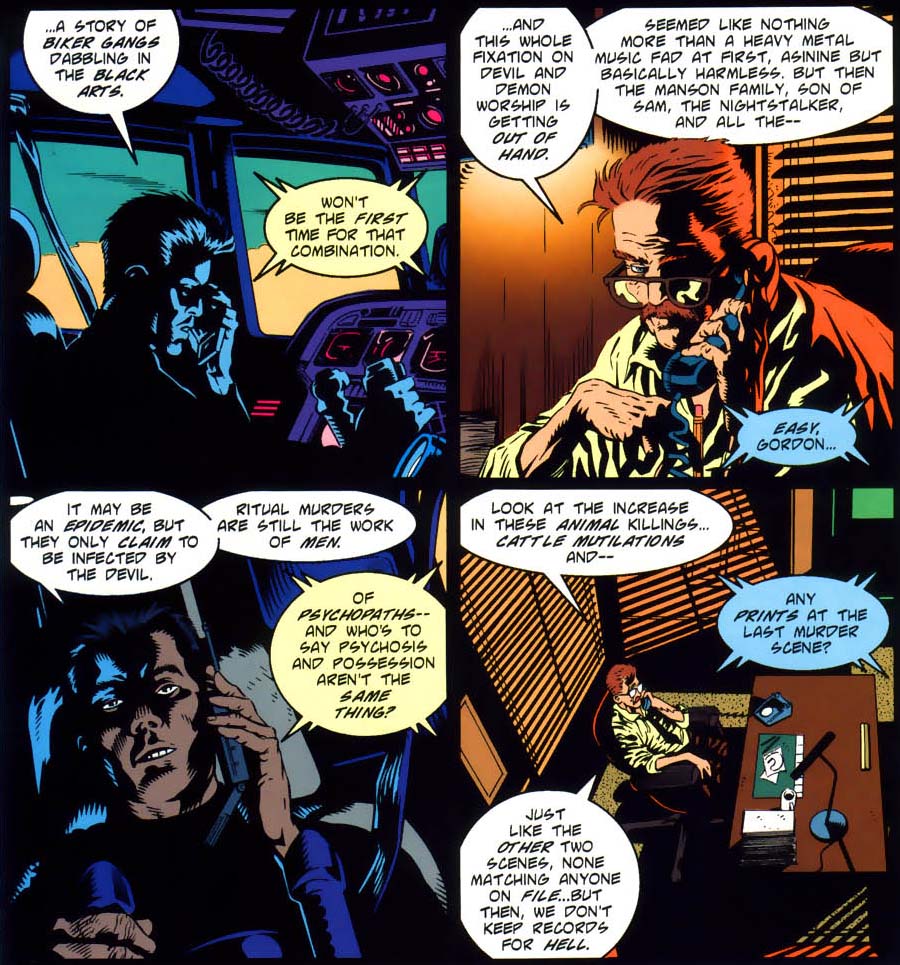 Legends of the Dark Knight #86
Legends of the Dark Knight #86
You can also find tales gritty enough to give Dirty Harry a run for his money in ‘Storm’ (#58), ‘Terminus’ (#64), and ‘Criminals’ (#69-70):
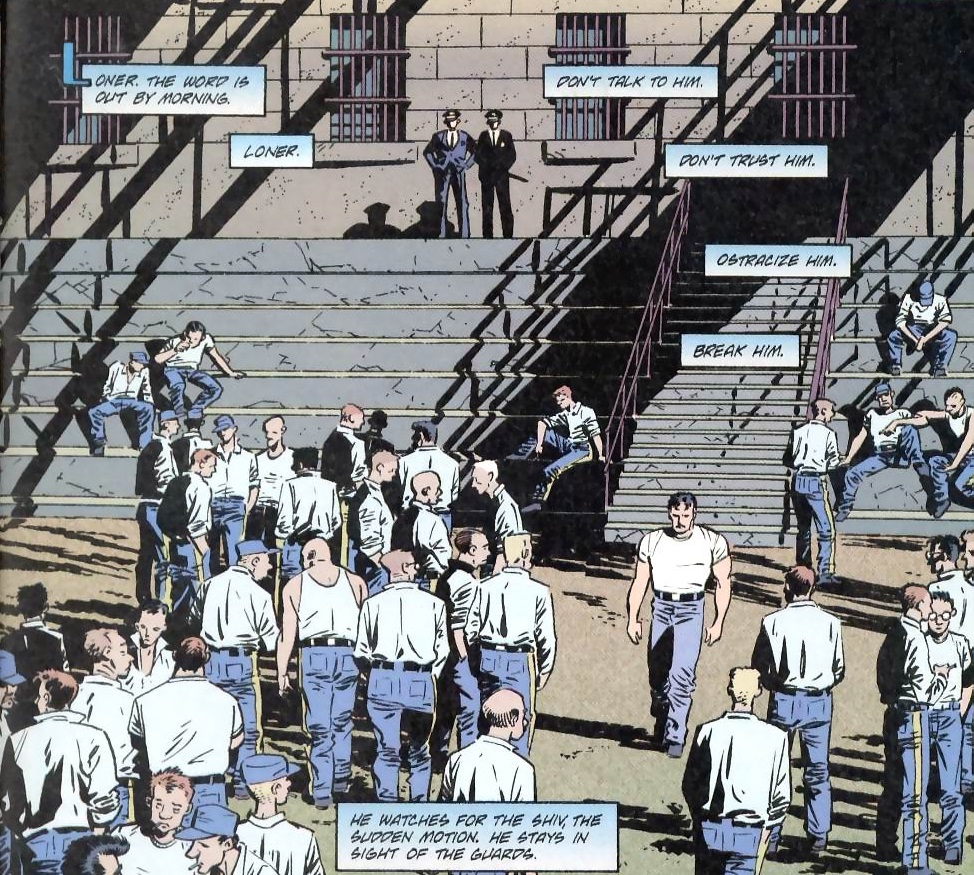 Legends of the Dark Knight #69
Legends of the Dark Knight #69
Of course this is just the tip of the iceberg. For example, if you like your Batman comics more on the insane side, there is ‘Engines’ (#74-75), which is as mind-boggling as one could expect when letting the surrealist Ted McKeever play in Gotham City. And of course, let us never forget ‘Sunset’ (#41), which is – I kid you not – a Batman remake of Billy Wilder’s classic film noir Sunset Blvd… but with vampires.
NEXT: Batman makes Robin cry.

